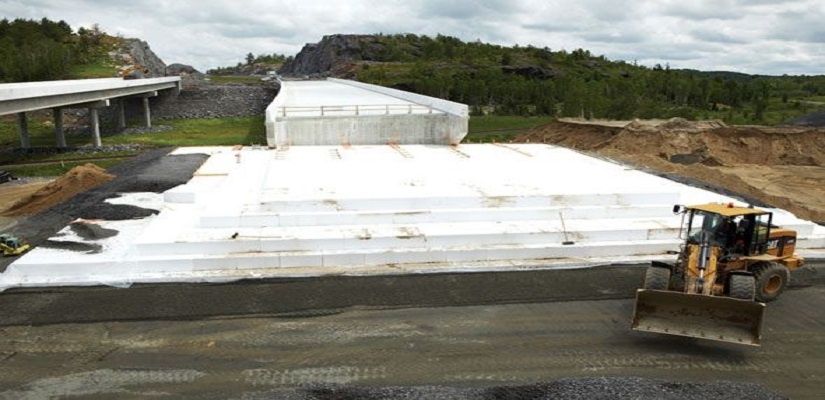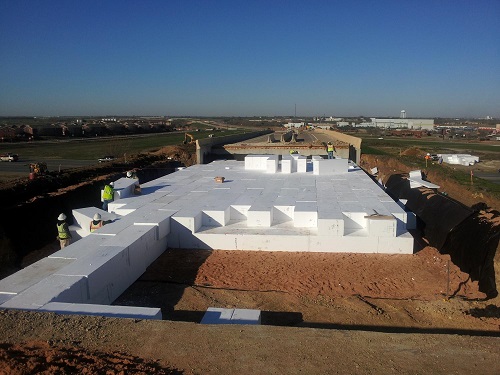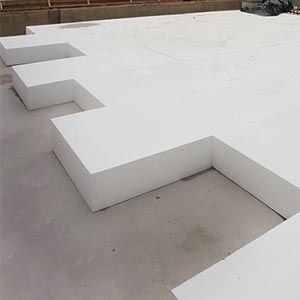Benefits of Using EPS Geofoam for Road and Home Construction

What is Geofoam?
EPS geofoam is a lightweight foam plastic that’s manufactured into blocks and commonly used as a structural geofoam backfill. As EPS geofoam has a unit thickness that can be generally as low as one pound for each square foot, it’s an incredibly lightweight choice to the soil that is almost multiple times lighter than general soils.
EPS geofoam is primarily used in the construction of highways, bridges, embankments, homes, roads, and parking lots, but there are myriad other uses as well. Due to the fact that geofoam is a soil replacement, it can be covered to look like a wall or a natural slope, making it an aesthetically pleasing option. The adaptability of this material is also attractive since it tends to be cut into practically any size and molded directly at the place of work.
EPS Geofoam is a cell plastic material that is solid, yet has an extremely low thickness (1% of traditional earth materials.) It is made in the square structure and fulfills the guideline rules “Standard Specification for Rigid, Cellular Polystyrene Geofoam.” EPS Geofoam is available in a range of types to provide control of structural integrity and cost effectiveness.
The data given is regarded to be exact, and dependable for the utilization of EPS Geofoam. Each project using EPS Geofoam ought to be planned by an expert architect. The architect or project specifications ought to be counseled to decide the quality of your venture stacking conditions. EPS is widely used in many everyday building and construction situations where its light weight, strength and thermal insulation characteristics provide cost effective high performance solutions. EPS Geofoam is also used as thermocol blocks for home construction.
EPS Thermocol Geofoam Benefits
Besides being a lightweight alternative to soil, there are a number of lesser-known benefits of using geofoam, including its ability to:
- Accelerate construction
- Be constructed in adverse weather
- Be constructed and vertically faced in right-of-way scenarios
- Eliminate the need for heavy earthmoving equipment
- Provide overall project cost savings
- Reduce labor
- Reduce later loads from being exerted on retaining structures
- Help prevent slope failures
- Eliminate the need for environmental permits



